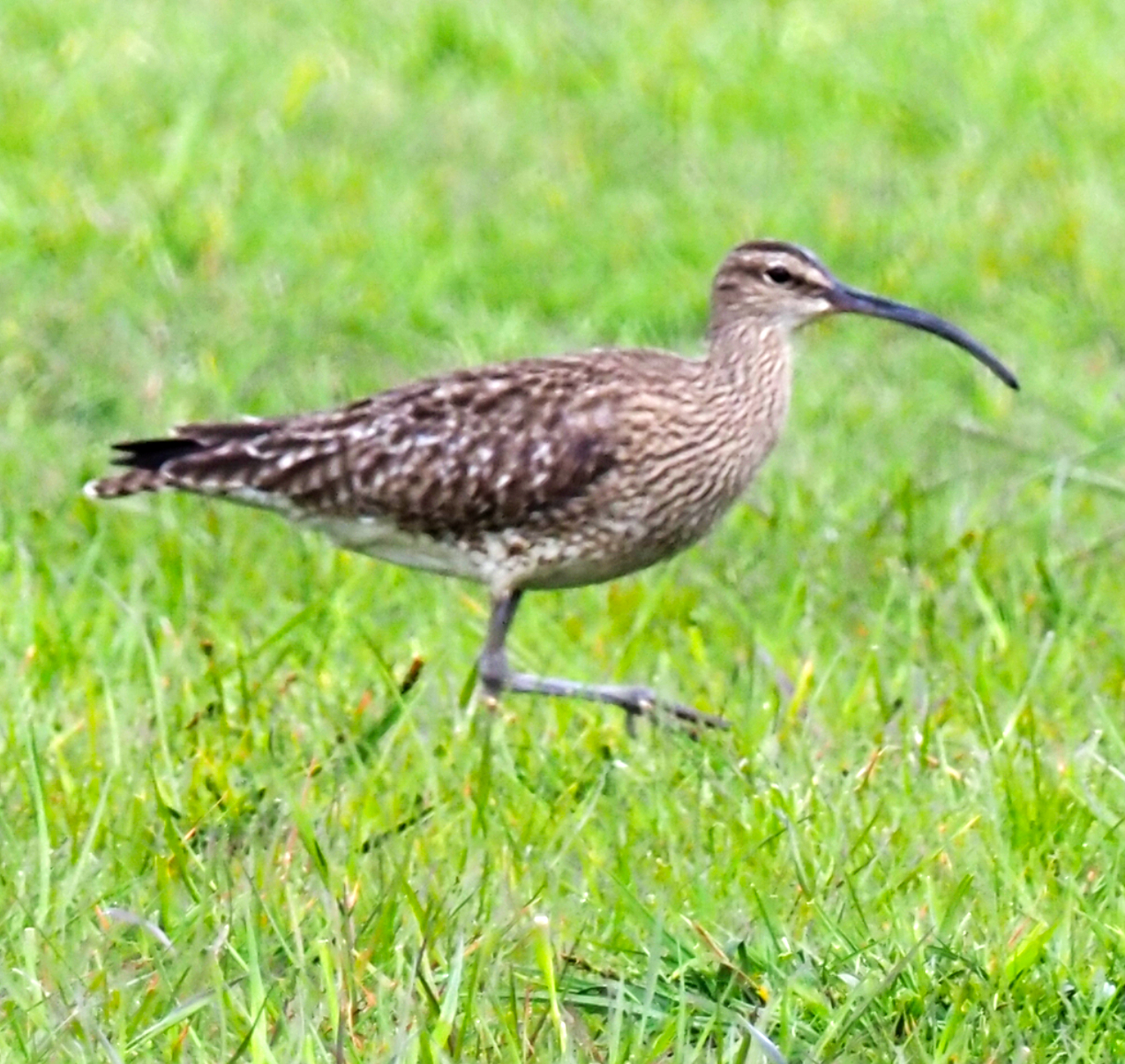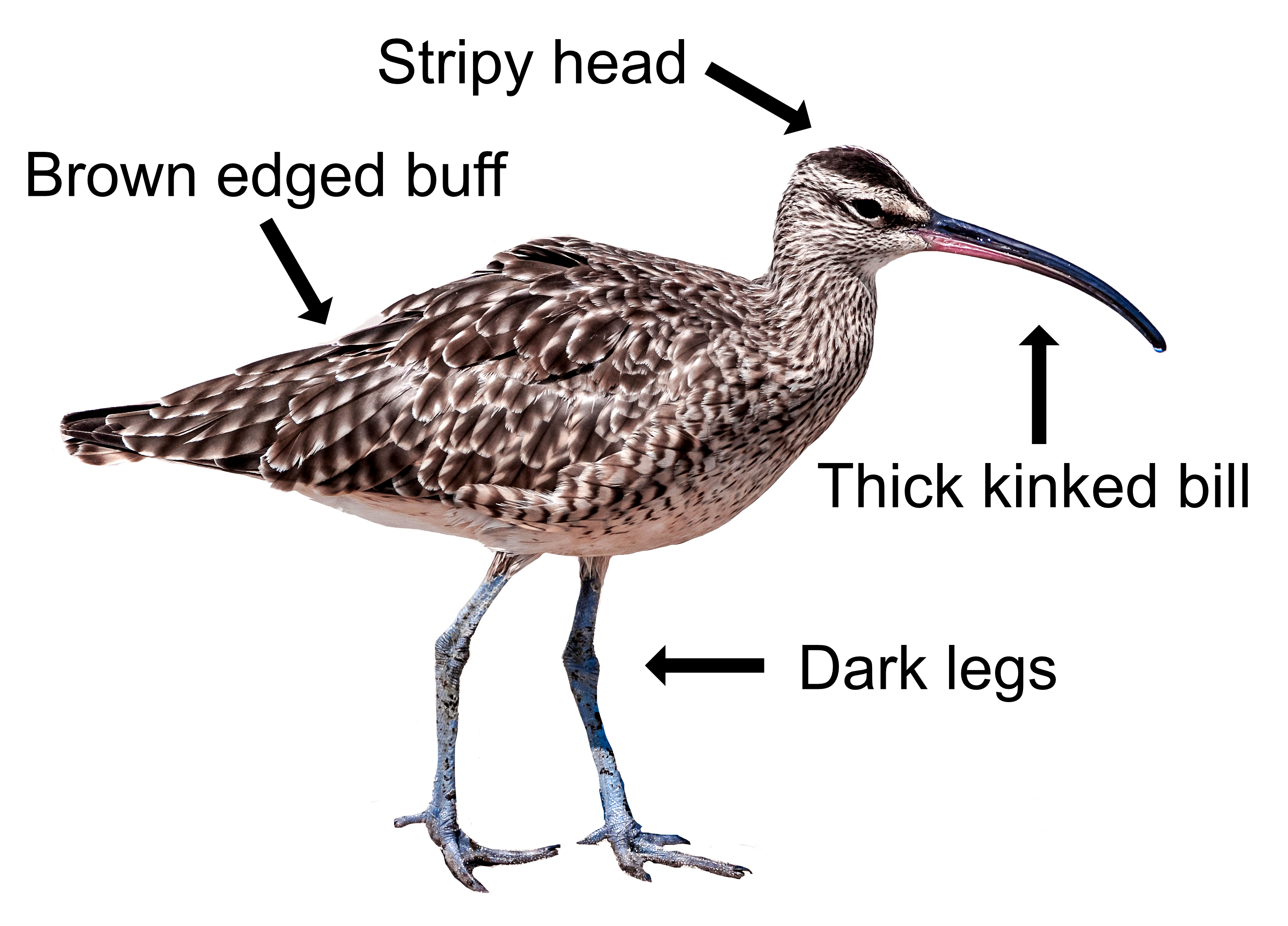
The Whimbrel is similar to the Curlew but has a noticeably stripy head and its bill is thicker and more kinked than curved, like a clown version. The Whimbrel is extremely scarce in winter, mainly passing through in autumn and spring. It is a long haul migrant, breeding in the far north and migrating as far as southern Africa. It is really lucky if you see one at a coastal estuary or marsh.
The Whimbrel is about a third smaller and is darker than the Curlew. It has brown back feathers edged with buff, lined underparts, and a dark head with a pale stripe through the centre of the crown and another above its eye. The bill is thick and kinked and it has short black legs. In flight, like the Curlew, it has a V-shape on its rump and often flies like geese in a V-formation. Their call is an eerie series of seven rippling “pe pe pe pe pe pe pe” whistles. Because of this, the Whimbrel is sometimes called the ‘seven whistler’. They also have a bubbling call similar to a Curlew’s.
Whimbrels eat insects, snails, worms, berries and small marine creatures, including crabs and shrimps, by picking and probing with their big bill.

Nearly all of the 300 British breeding Whimbrel pairs can be found on the Orkney islands and the numbers have been slowly increasing. They like to breed on open country and upland bogs, nesting amongst short vegetation. Unlike the Curlew, mum builds the nest. Both parents take it in turns to incubate the 3-4 eggs which hatch after 27 days. The young can feed themselves and are cared for by mum and dad, who are very defensive of their nesting area and will even attack humans who come too close. The youngsters can fly at 25 days, soon becoming independent. Whimbrels do a partial moult before moving from their breeding grounds in July, keeping their wing feathers as they move rapidly south during August and September to their wintering grounds.
About 3,000 Whimbrels pass along our coasts during migration. Climate change, habitat destruction and outbreaks of Avian Flu have badly impacted them, and they are now specially protected. The oldest ringed Whimbrel lived to 16.
Their Latin name is ’numenius phaeopus’ where ’numenius’ is from the Ancient Greek ’noumenios’ derived from ’neos’ for ‘new’ and ’mene’ for ‘moon’, referring to the crescent-shaped bill, and the ’phaeopus’ is from ’phaios’ for ‘dusky’ and ’pous’ for ‘foot’, referring to their dark feet and legs. The English name ‘Whimbrel’ is an imitation of the bird’s call. Apart from the Whimbrel and Curlew here, there are six other species of Curlews in the world, two of which - the Eskimo Curlew of North America and the Slender-billed Curlew of Eastern Europe - may now, sadly, be extinct.